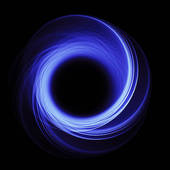Official Everybody Edits Forums
Do you think I could just leave this part blank and it'd be okay? We're just going to replace the whole thing with a header image anyway, right?
You are not logged in.
- Topics: Active | Unanswered
Pages: 1
#1 2016-10-10 08:05:46
- Hannah32
- Member

- Joined: 2015-12-10
- Posts: 104
Is black a colour or a shade?
This actually intrigues me; similar to whether white is a colour or a tint. What do you think?
Offline
#2 2016-10-10 08:43:21
- Swarth100
- Member

- Joined: 2015-07-18
- Posts: 305
Re: Is black a colour or a shade?
In terms of physics, pure black is total lack of light. You cannot see black, it is just a way your eyes make sense of the total obscurity infront of them.
In terms of code, black is [0, 0, 0]... not much colour in those pixels either.
Offline
- Wooted by:
#3 2016-10-10 14:30:32
- Koya
- Fabulous Member

- From: The island with those Brits
- Joined: 2015-02-18
- Posts: 6,310
Re: Is black a colour or a shade?
In terms of art, black is a colour - white is a tint of black, black is a shade of white; tint and shade are some words that describe colour relationship.


Thank you eleizibeth ^

I stack my signatures rather than delete them so I don't lose them

Offline
#4 2016-10-10 14:31:49
- Nebula
- Guest
Re: Is black a colour or a shade?
Illusion kek
#5 2016-10-10 15:04:49, last edited by hummerz5 (2016-10-10 16:03:35)
- hummerz5
- Member

- From: wait I'm not a secret mod huh
- Joined: 2015-08-10
- Posts: 5,853
Offline
- Wooted by:
#6 2016-10-10 16:14:35
- XxAtillaxX
- Member

- Joined: 2015-11-28
- Posts: 4,202
Re: Is black a colour or a shade?
Colour is a discussion about how the eye perceives certain wavelengths of light.
Shade similarly is a discussion of how the eye perceives intrinsic brightness.
"the property possessed by an object of producing different sensations on the eye as a result of the way the object reflects or emits light."
In this context, as they are both questions about colour vision, without being pedantic, black is a colour as well as a shade.

*u stinky*
Offline
- Wooted by: (2)
#7 2016-10-10 16:54:45
- Anatoly
- Guest
Re: Is black a colour or a shade?
We people actually cannot see the colour "black". Black is removing all light waves, and returns nothing, i mean, that black is not existing as a color. If thinking physically that black is not existing, so i say black is not a color and not a shade. It's not existing.
#8 2016-10-10 18:53:06
- Ratburntro44
- Member

- Joined: 1970-01-01
- Posts: 1,383
- Website
Re: Is black a colour or a shade?
We people actually cannot see the colour "black".
please explain then what the quale that appears in the absence of light is
Black is removing all light waves, and returns nothing, i mean, that black is not existing as a color.
you don't actually give any reason here for why black would not be a color. there isn't an intrinsic necessary connection between light waves and colors, nor is there reason to believe that not having light waves implies that something is not a color (is a dark color less of a color than a light color is?)
If thinking physically that black is not existing, so i say black is not a color and not a shade. It's not existing.
this doesn't even make sense
i pretty much agree with atilla here
Offline
#9 2016-10-10 19:23:29
- Kaleb
- Formerly Kaleb123
- From: California of America
- Joined: 2015-02-19
- Posts: 1,263
Re: Is black a colour or a shade?
Black is a shade because it is the "absence of all colors" and white is "all colors", though some people may argue that black is indeed a color. I think black is both tbh because on the finite scale of colors how many shades of grey are there till you hit black? I know I don't know but what I do know is that there is no fine line between back as a color and black as a shade so you just have to wing it sort a (well depending on what you are doing). Say I want to sketch something I would want to add lots of "shade" not black because in this scenario "black" is not a color it is a shade. Also say I wanted to paint a canvas of a deep hole going into the ground and it seems endless, this scenario would be using "black" as an actual color and not a shade.
So there are multiple representations of the black so it really depends on your perspective, motive, and what you are doing to incorporate said black.
Offline
#10 2016-10-10 20:32:35
- Sensei1
- Member

- From: The land of saunas
- Joined: 2015-02-16
- Posts: 1,112
Re: Is black a colour or a shade?
If black is something without any colour, are dark colours just less colourful than light colours?
Offline
#11 2016-10-10 21:38:51
- 0176
- Member

- From: Brazil
- Joined: 2021-09-05
- Posts: 3,174
Re: Is black a colour or a shade?
Isn't this just semantics
Offline
#12 2016-10-10 22:04:32
- Tomahawk
- Forum Mod

- From: UK
- Joined: 2015-02-18
- Posts: 2,847
Re: Is black a colour or a shade?
Black and white are colours. All colours are shades and all shades are colours.
One bot to rule them all, one bot to find them. One bot to bring them all... and with this cliché blind them.
Offline
#13 2016-10-10 23:44:13
- Kkay
- Formerly Kaydog99

- From: Canda eh
- Joined: 2015-08-20
- Posts: 495
Re: Is black a colour or a shade?
Offline
#14 2016-10-11 00:28:47
- Koya
- Fabulous Member

- From: The island with those Brits
- Joined: 2015-02-18
- Posts: 6,310
Re: Is black a colour or a shade?
It's like a lot of people have never concentrated in art class.
Black is a colour and it can be used to make shades.


Thank you eleizibeth ^

I stack my signatures rather than delete them so I don't lose them

Offline
#15 2016-10-11 00:45:21
- Kaleb
- Formerly Kaleb123
- From: California of America
- Joined: 2015-02-19
- Posts: 1,263
Re: Is black a colour or a shade?
Kaydog99 wrote:It's like a lot of people have never concentrated in art class.
Black is a colour and it can be used to make shades.
That is basically what I said here sort-a.
Black is a shade because it is the "absence of all colors" and white is "all colors", though some people may argue that black is indeed a color. I think black is both tbh because on the finite scale of colors how many shades of grey are there till you hit black? I know I don't know but what I do know is that there is no fine line between back as a color and black as a shade so you just have to wing it sort a (well depending on what you are doing). Say I want to sketch something I would want to add lots of "shade" not black because in this scenario "black" is not a color it is a shade. Also say I wanted to paint a canvas of a deep hole going into the ground and it seems endless, this scenario would be using "black" as an actual color and not a shade.
So there are multiple representations of the black so it really depends on your perspective, motive, and what you are doing to incorporate said black.
Offline
#16 2016-10-11 01:54:07
- Kaslai
- Official Caroler

- From: SEAͩT̓͑TLͯͥͧͪ̽ͧE͑̚
- Joined: 2015-02-17
- Posts: 787
Re: Is black a colour or a shade?
Hey forums, Kaslai here.
According to Dictionary.com, color is: "the quality of an object or substance with respect to light reflected by the object, usually determined visually by measurement of hue, saturation, and brightness of the reflected light; saturation or chroma; hue."
Color is just the name we give to the way an object reflects or absorbs color. Total absorption (black) and total reflection (white) are not special cases with regards to this definition; as such, black and white are colors.
But... What exactly is color? Dictionary definition aside, when we refer to color we tend to think of saturated colors; the colors of the rainbow; the effects of individual wavelengths of visual electromagnetic radiation on our retinas. In this case, you could call white the total presence of color, and black the total absence of color, though even our blackest material still reflects some visible light. Wouldn't this mean our blackest blacks are still colors?
Black holes are... black. So black, in fact, that light can't even escape their gravitational pull. They are truly black; the total absence of color. Do we draw the line here? No light bounces off of a black hole into our eyes, so do they have a color? Does it even matter?
Eyes are amazing things. They allow our fleshy lumps called brains to peer out into the world, without which we would have no notion of color. Different forms of electromagnetic radiation wouldn't even matter to us in the first place, as eyes are the only instruments with which we can measure it directly. So... why do we see "visible" light? What makes "visible" light any different from the other wavelengths of EMF that we bathe in on a daily basis? What makes a 400nm wave any different from a 700nm wave?
If we have identical levels of EMF at all wavelengths from 400nm to 700nm, but no other wavelengths, do we really have the color "white?" Many other organisms would claim otherwise (if they could talk, of course). Examples of ultraviolet and infrared sensitivity are present in many organisms throughout the world. Why is it that us humans only see a small band of EMF? Why can't we see the true beauty of so many flowers which seem relatively mundane without UV sensitivity?
Color is just a construct put forth by us humans to describe certain qualities of electromagnetic radiation in a primitive manner. It is a rough measure of EMF's effect on a retina. Whether that effect is total stimulation, or total deprivation, it is still color.
Offline
- Wooted by:
#17 2016-10-11 02:12:36
- Koya
- Fabulous Member

- From: The island with those Brits
- Joined: 2015-02-18
- Posts: 6,310
Re: Is black a colour or a shade?
Koya wrote:Kaydog99 wrote:It's like a lot of people have never concentrated in art class.
Black is a colour and it can be used to make shades.
That is basically what I said here sort-a.
Kaleb123 wrote:Black is a shade because it is the "absence of all colors" and white is "all colors", though some people may argue that black is indeed a color. I think black is both tbh because on the finite scale of colors how many shades of grey are there till you hit black? I know I don't know but what I do know is that there is no fine line between back as a color and black as a shade so you just have to wing it sort a (well depending on what you are doing). Say I want to sketch something I would want to add lots of "shade" not black because in this scenario "black" is not a color it is a shade. Also say I wanted to paint a canvas of a deep hole going into the ground and it seems endless, this scenario would be using "black" as an actual color and not a shade.
So there are multiple representations of the black so it really depends on your perspective, motive, and what you are doing to incorporate said black.
And what I said before you :^)
In terms of art, black is a colour - white is a tint of black, black is a shade of white; tint and shade are some words that describe colour relationship.


Thank you eleizibeth ^

I stack my signatures rather than delete them so I don't lose them

Offline
Pages: 1
[ Started around 1732233762.6019 - Generated in 0.766 seconds, 12 queries executed - Memory usage: 1.65 MiB (Peak: 1.87 MiB) ]